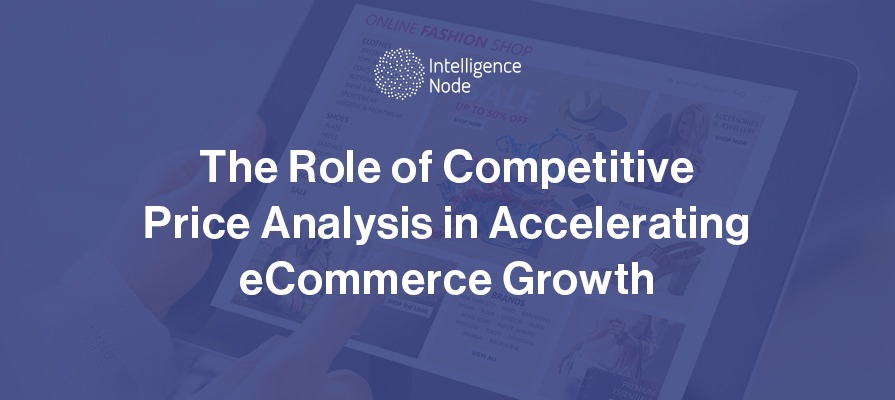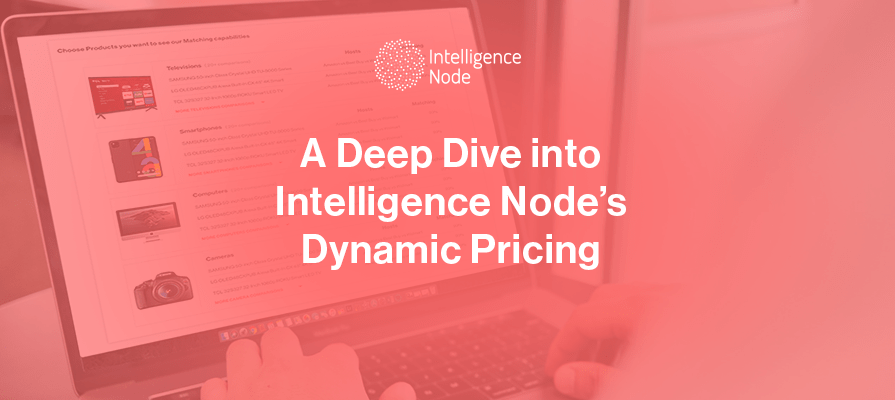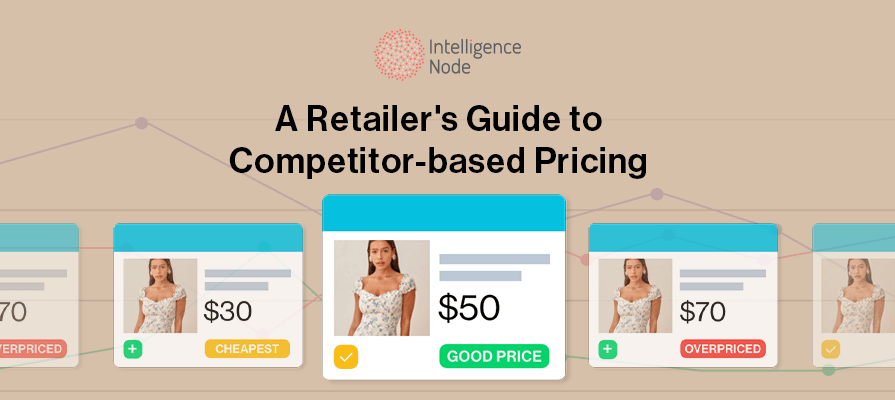Using competitive price analysis software is a necessity for staying one step ahead of your competitors at all times!
Competitive pricing analysis was once considered a luxury — something only big brands could afford to implement. But in today’s commerce landscape, that’s no longer the case.
With customers as smart and market savvy as ever, competitive pricing has become a necessity. If your prices can’t compete with your competitors’ while still staying profitable, it won’t be long before you see revenue, customer satisfaction, and brand image start plummeting.
But before we get ahead of ourselves talking about this essential facet of modern-day pricing strategy, let’s go back to the basics.
Content Summary:
What is competitive price analysis?
How do you perform a competitive price analysis?
Why are competitive pricing tools so important?
What are the big picture benefits of competitive pricing?
When is the best time to implement a competitive pricing strategy in retail?
What is competitive price analysis?
Essentially, competitive price analysis is a mindset shift — from the arbitrary to the pragmatic. Here, we’re looking to make pricing decisions based on a multitude of data-driven factors rather than intuition.
So what are these data-driven factors? Well, the “competitive” aspect here is telling; one of the main factors is, naturally, your competition. Every pricing decision you make comes with the caveat question of whether it can beat the other offers out there.
But this competitor factor is a wide umbrella with many sub-factors of its own. When it comes to your market opponents, you have to consider their existing prices as well as their historical prices. And, putting it all together, it’s worth gaining a grasp of their overall pricing trends — when do they hike or lower their prices? What sort of ebbs and flows do they abide by? Or what about their promotional trends — when do they run discounts? And how about looking beyond pricing — how do other initiatives like marketing and promotional offers vary over time?
But let’s expand the idea of beating your competition. Because you’re not just competing with other brands; in a way, you’re also trying to “beat” your own business from the past. To this end, a competitive pricing strategy also needs to factor in historical data, fully considering what has and hasn’t worked for you previously.

Another side to this die is your customers themselves — how have their trends changed over time? What sort of behavioral patterns can you confidently predict moving forward?
Or what about your broader market realities? Beyond your direct competitors, you need to consider big-picture industry shifts or general cultural movements that may impact the perception and consumption of your product. (As a timely example, consider the impact of a pandemic across industries).
The questions go on and on. But the bottom line is that this process utilizes competitive pricing data to answer these questions and use these answers to develop more informed business strategies.
How do you perform a competitive price analysis?
So, we’ve now thoroughly identified many of the questions that competitive price analysis asks. But let’s actually explore what the process of answering these questions might look like.
First, before you can make any decisions with respect to your competitors, you have to know who your competitors are. Part of this process is a matter of finding out which brands truly do compete for the same customers that you do.
Another leg of competitive price analysis comes in the form of categorization because not all competitors come equal. The initial instinct here is to think of direct competitors — the ones who offer similar services, with similar brand reputations and target audiences (think: McDonalds and Burger King, Nike and Under Armour). But we also can’t forget about secondary competitors — these are the brands in the same product category with offerings of higher or lower quality (i.e. McDonalds and Five Guys or Shake Shack, Nike and Champion or Old Navy). And then there are also tertiary competitors, who offer different products that act as substitutes which still compete with yours (i.e. Zara for Nike).
With that out of the way: Once you do know your competitors, you want to know the ins and outs of their operations. Consider this the research step, analyzing their pricing trends from all angles possible. We’ve already mentioned several considerations to take here, but many other minor details that go into pricing — for instance, the differences between prices listed online versus in-store. And then expand your reach beyond the prices in any relevant way. Digest their content, pin down their value propositions, read customer and press reviews.
Now, this research step can get overwhelming; there are, after all, seemingly unlimited amounts of competitive pricing data at your disposal. To narrow things down a bit and focus your efforts, it’s important to pinpoint the data categories that matter most to you (i.e. that are most likely to have areas of opportunity). Some examples we’ve touched on — discounting tendencies, for instance. And some we haven’t — consider how prices often bend according to rises and falls in supply.
But no matter which details are most important to your brand, using manual processes and spreadsheets to analyze data just won’t make the cut. This is where the magic of competitive price analysis software comes into play.
Why are competitive pricing tools so important?
Now that we’ve outlined the general framework of what a competitive pricing strategy looks like, you wouldn’t be mistaken if it seems like a tall task. It sounds good in theory, but where in the world are you supposed to find the resources to conduct this thorough, nuanced research-&-analysis process?
Read More : A Smart Price Intelligence Software is Your Best Bet to Increase Revenue
The answer comes in the form of competitive price analysis software. We have the luxury of machine-learning tools at our fingertips — ones that can juggle huge loads of different data with exceptional accuracy and speed. The competitive price analysis tools take the manual labor of competitor research and data analysis off your plate, enabling your team to focus on the important human tasks.
Perhaps most important of all is that such automated software performs pricing analysis in real time. For instance, consider our own Intelligence Node price comparison software, which instantly collects and presents accurate, up-to-the-minute competitors insights. In fact, with a data refresh rate of 10 seconds, you can adjust your prices based on what’s happening right now. After all, price optimization is a game that never sleeps; if you’re making decisions based on yesterday’s data, you’re already a few steps behind.

Often, managers are thrown off by the proposition of bringing in competitive price analysis software. It’s yet another thing to figure out, implement, and pay for — and trust us, we get it. But when looking at the broader picture of market competition, these competitive price analysis tools are actually a cost-saving measure. They save your team boatloads of time wasted on manual labor, they increase the efficiency of your price setting strategies, they track similar products across thousands of your SKUs and they open the door to market insights you simply would never have accessed otherwise. Just consider for a minute how our Competitive Benchmarking tool identifies hidden tertiary competitors from around the globe! Where else are you getting that international reach?
What are the big picture benefits of competitive pricing?
Beyond the advantages just mentioned, let’s examine what benefits you get from a fully functional, automated competitive pricing database.
When we look at all the research and different kinds of data, the goal is to find your competitors’ weak spots. That’s why we spend so much time identifying true competitors! Because how can we construct a winning strategy if we don’t know who we’re going up against? This process is about finding the holes where competitors are underrepresented (where their prices aren’t ideal, where their supply is short) and taking advantage. As markets fluctuate, areas of opportunity present themselves; our goal here is to find them as they pop up.
The more you’re able to take advantage of those areas of opportunity, the better for your profit margins. And if you can optimize your prices on a consistent basis, it puts you in an unprecedented power position to scale your business. It gives you the ability to make informed product decisions, based on competitive pricing analysis data, that see the entire chessboard — where you make decisions viewing your entire product line as a whole, rather than a collection of distinct items.
To continue the chessboard analogy, competitive price analysis really is about being several steps ahead of your competitors. We keep mentioning the power of making accurate, profitable decisions in real time, but the big power here is that of making decisions ahead of time. That’s what competitive price analysis tools can give you.
When is the best time to implement a competitive pricing strategy in retail?
The implementation of competitive pricing strategies will differ across industries and companies. While you can implement a competitive pricing strategy in the early stages of your business, it will be most profitable when you are looking to scale, acquire and retain customers, and improve your profitability now and in the future. Which approach will give you the most benefits listed above depends on a host of factors — check out our article detailing several such strategies for more.
But what doesn’t vary is the importance of having these systems up and running asap! Tapping into data sure beats any system of arbitrary analysis, so get started today.




